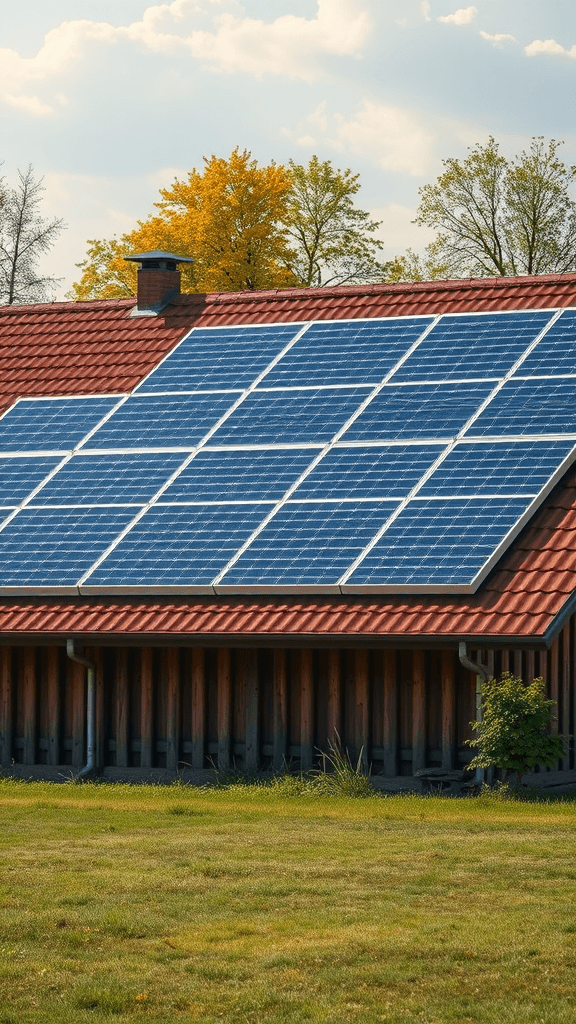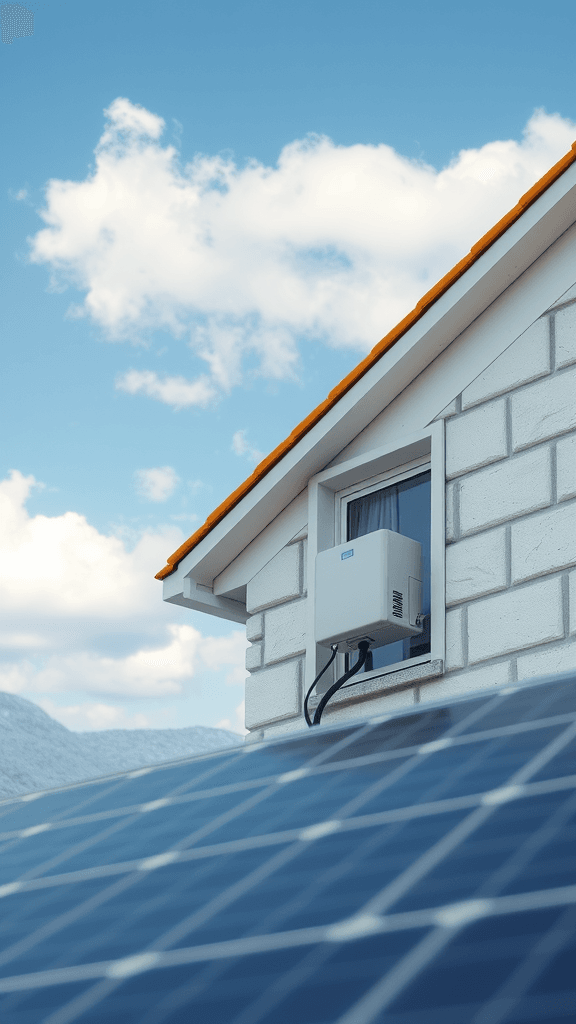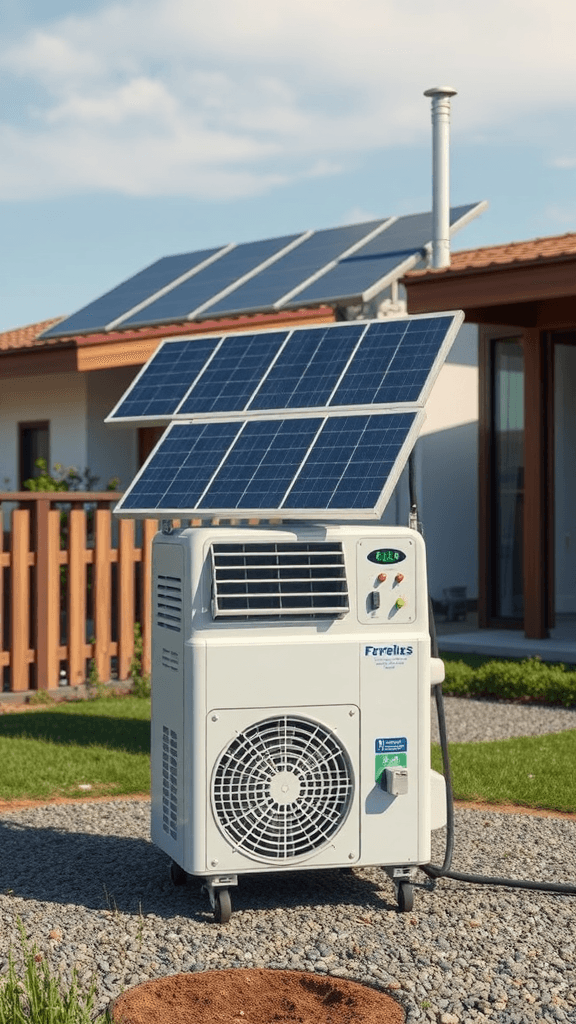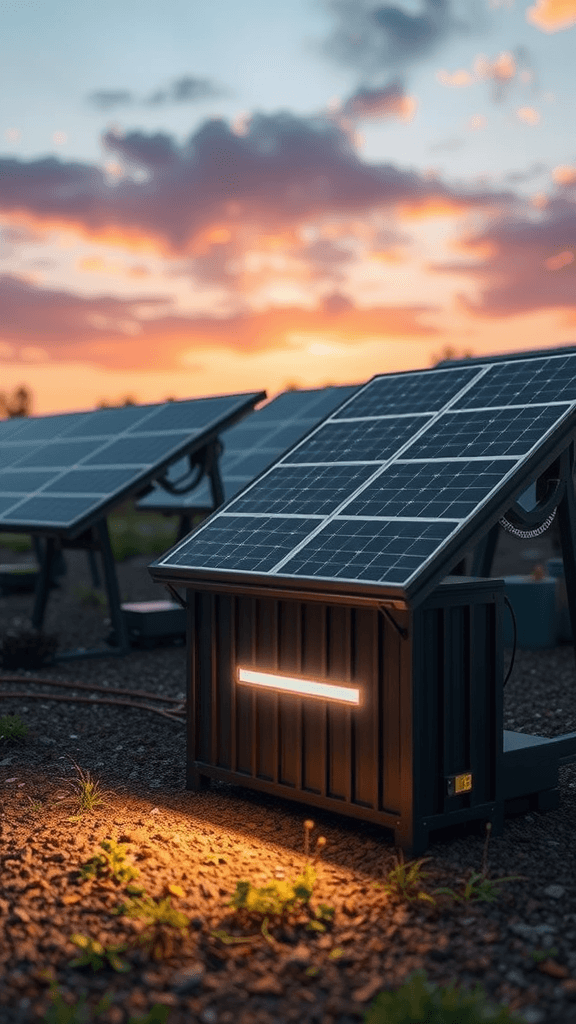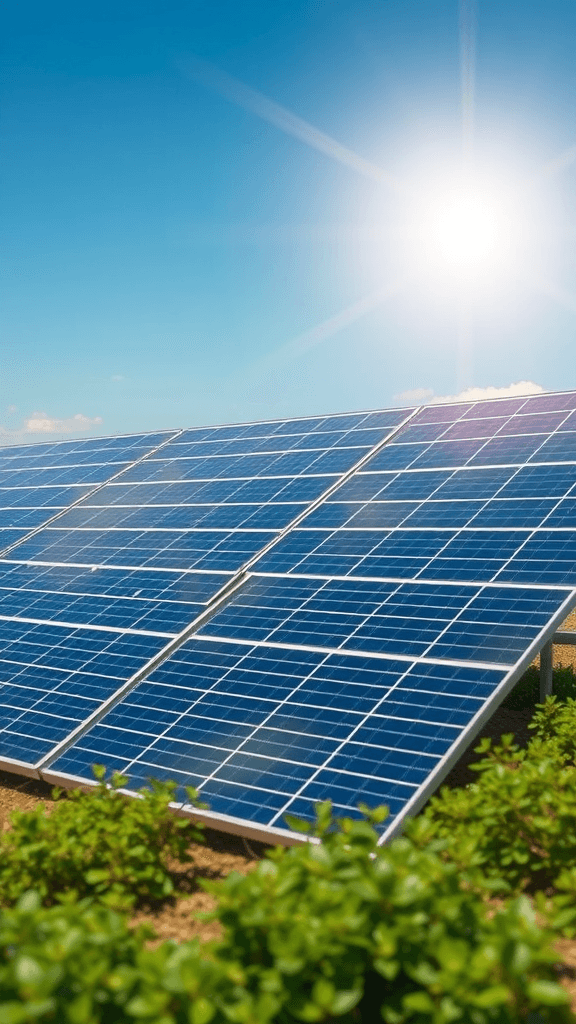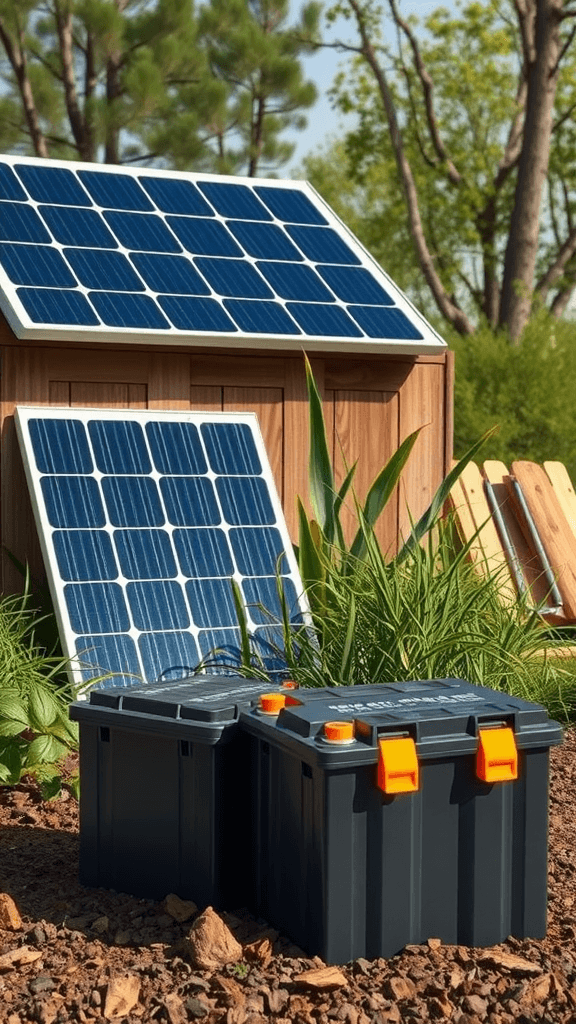How To Store Solar Power
Effective Techniques for Storing Solar Power in Home Systems
Storing solar power effectively is essential for maximizing the benefits of your home solar system. When harnessing the sun’s energy, one of the main challenges is ensuring that this power can be used when it’s needed, even after the sun goes down. Here are some effective techniques that you can consider to store solar energy in your home systems.
Battery Storage Systems
Battery storage systems are the most popular choice for homeowners looking to store solar power. This technology allows you to capture and store excess energy generated during the day for use at night or during cloudy days. Here are some points to consider:
- Lithium-Ion Batteries: These are the most common type of batteries used in solar systems due to their high energy density, long lifespan, and efficiency.
- Lead-Acid Batteries: While cheaper, these batteries may require more maintenance and have a shorter lifespan. They are typically used for smaller applications.
- Flow Batteries: This innovative solution stores energy in liquid form and is excellent for large-scale storage.
Investing in a quality battery storage system can make a significant difference in managing your energy use.
Grid-Tied Systems with Net Metering
An additional method of storing solar power is through grid-tied systems with net metering. This option allows you to send excess energy back to the grid when your solar panels produce more power than you need. When your system isn’t producing enough energy, you can draw from the grid. Here’s how it works:
- Energy Credits: The power you send back to the grid typically earns you credits that can be used to offset your utility bills.
- Simplicity: You won’t need to invest in a large battery system, which can save you upfront costs.
- Reduced Carbon Footprint: This option helps promote renewable energy usage in your community.
Always check local regulations and utility company policies to ensure you can benefit from net metering.
Thermal Energy Storage
Another effective technique involves thermal energy storage. This option captures and stores heat from solar energy to provide hot water or heating. Here’s how it works:
- Solar Water Heating Systems: These systems heat water using solar energy and store it in insulated tanks for later use.
- Phase Change Materials: Innovative products that absorb and release heat energy can help maintain a consistent temperature in your home.
- Hydronic Heating: This system allows heat to be stored in water, offering efficient heating throughout your home.
Utilizing thermal energy storage can help increase the efficiency of your solar power system throughout various seasons.
Smart Energy Management Systems
To effectively store solar power, combining your storage solution with smart energy management can enhance efficiency. Here’s how:
- Monitoring Usage: Smart meters allow you to track when and how much energy you use, helping you optimize your storage solutions.
- Automating Consumption: Smart systems can automatically decide when to draw power from your battery versus the grid, maximizing savings.
- Integration with Home Appliances: Some systems can manage when to run appliances, ensuring they use stored solar power during off-peak hours.
Smart energy management can significantly enhance your overall energy efficiency by ensuring you’re using stored solar power wisely.
Considerations for Effective Storage
When looking to store solar power, consider the following:
- Assess Your Energy Needs: Knowing your average energy usage helps you choose the right storage capacity.
- Circuit Compatibility: Ensure your home’s electrical system is compatible with the type of storage you choose.
- Local Climate: Depending on your geographical location, your energy needs and output may vary, influencing your storage selection.
Effective solar power storage is crucial for making the most of your home solar system. By carefully selecting the appropriate methods and technologies based on your individual needs, you can enjoy the benefits of solar energy year-round.
The Future of Solar Power Storage: Innovations and Trends
As solar energy continues to gain traction as a sustainable energy source, the importance of effective solar power storage cannot be understated. The ability to harness and store solar energy directly impacts the viability of solar systems for both residential and commercial applications. Several innovations and trends are shaping the future of solar power storage, making it more efficient and accessible.
Battery Technology Advancements
Recent developments in battery technology play a crucial role in solar power storage. Traditional lead-acid batteries are gradually being replaced by lithium-ion batteries due to their higher efficiency and longer lifespan. Here are some notable innovations in battery technology:
- Solid-State Batteries: These batteries utilize a solid electrolyte instead of a liquid one, reducing the fire risk and increasing energy density. As manufacturing processes improve, solid-state batteries are poised to become a game-changer in solar power storage.
- Flow Batteries: Flow batteries store energy in liquid electrolytes, allowing for scalable and long-lasting storage. Their ability to be recharged quickly and their long cycle life make them ideal for renewable energy applications.
- Hybrid Batteries: Combining various battery technologies can optimize efficiency and meet specific energy storage needs. Hybrid battery systems can offer tailored solutions for homes and businesses.
Grid-Storage Solutions
As the demand for renewable energy grows, grid-storage solutions are becoming increasingly important. These large-scale storage systems allow for the integration of solar energy into the electricity grid, stabilizing supply and demand. Some key players in this area include:
- Pumped Hydro Storage: This method uses excess energy to pump water uphill, which can then be released to generate electricity when needed. It remains one of the most efficient energy storage methods available.
- Compressed Air Energy Storage (CAES): By using excess energy to compress air, it can be stored in underground caverns and released to drive turbines, generating electricity during peak demand periods.
- Thermal Energy Storage: This system captures excess solar energy in the form of heat, which can be stored and used for power generation or heating when the sun isn’t shining.
Innovative Solar Storage Products
Innovations in solar power storage products are making solar energy more user-friendly and efficient. As companies race to create solutions, several products stand out:
- Smart Inverters: These devices not only convert solar energy into usable electricity but also optimize energy harvesting and facilitate storage operations. They can communicate with the grid and adjust settings based on energy needs.
- Home Energy Management Systems (HEMS): HEMS software provides homeowners with real-time information on energy consumption. Users can track their energy use and optimize it to take advantage of stored solar power.
- Solar Batteries with AI Integration: Some solar battery systems now use artificial intelligence to predict energy usage patterns. This innovation ensures the most efficient use of stored energy and can reduce overall energy costs.
Environmental Impact and Sustainability
As the world shifts towards more sustainable practices, the production and disposal of solar storage solutions are under scrutiny. Companies are innovating in several ways to enhance environmental sustainability:
- Recycling Programs: As battery technology evolves, recycling has become vital. Many companies are focusing on closing the loop by developing effective recycling methods for lithium-ion and other battery types.
- Reducing Carbon Footprint: Sustainable materials are being used in battery production. The goal is to minimize the carbon footprint and environmental impact associated with the lifecycle of solar storage systems.
- Second-Life Batteries: Used electric vehicle batteries can be repurposed for solar energy storage, providing a cost-effective solution and extending the lifecycle of these batteries.
As you consider implementing solar energy solutions, understanding these innovations and trends in solar power storage can significantly enhance your efficiency and sustainability. Embracing the future of solar power storage not only benefits your energy consumption but also contributes positively to environmental conservation. Keep an eye on emerging technologies and practices to stay ahead in the renewable energy landscape.
Conclusion
Storing solar power effectively is essential for maximizing the benefits of your home solar system. By understanding various techniques, such as using batteries, thermal energy storage, and advanced grid-tied systems, you can harness the full potential of the energy generated from the sun. Each of these methods offers unique advantages, allowing you to select the one that best meets your household needs, budget, and energy goals.
As the solar industry evolves, exciting innovations and trends continue to emerge, paving the way for more efficient and reliable power storage options. New technologies like lithium-ion batteries and flow batteries are becoming increasingly accessible, supporting homeowners in their quest for energy independence. Innovations, including smart energy management systems, will further enhance your ability to store and utilize solar power intelligently.
Looking ahead, the future of solar power storage is bright. As technology advances, you can expect enhanced storage capacities, longer lifespans for batteries, and even more environmentally friendly options. These developments will contribute significantly to the efficiency of solar systems, making them an integral part of our energy landscape.
By investing time and resources into understanding and implementing effective solar power storage solutions, you can not only save on energy costs but also contribute positively to the environment. Embrace these advancements, and you’ll be well-prepared for a sustainable future powered by the sun. Whether you’re just starting with solar energy or looking to upgrade your existing system, the journey towards efficient solar power storage is both exciting and rewarding.

